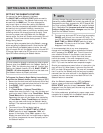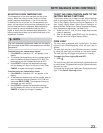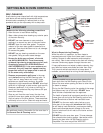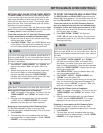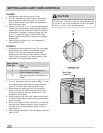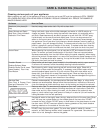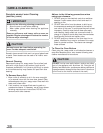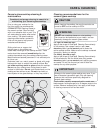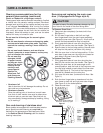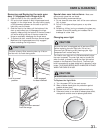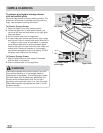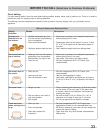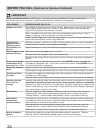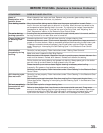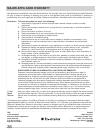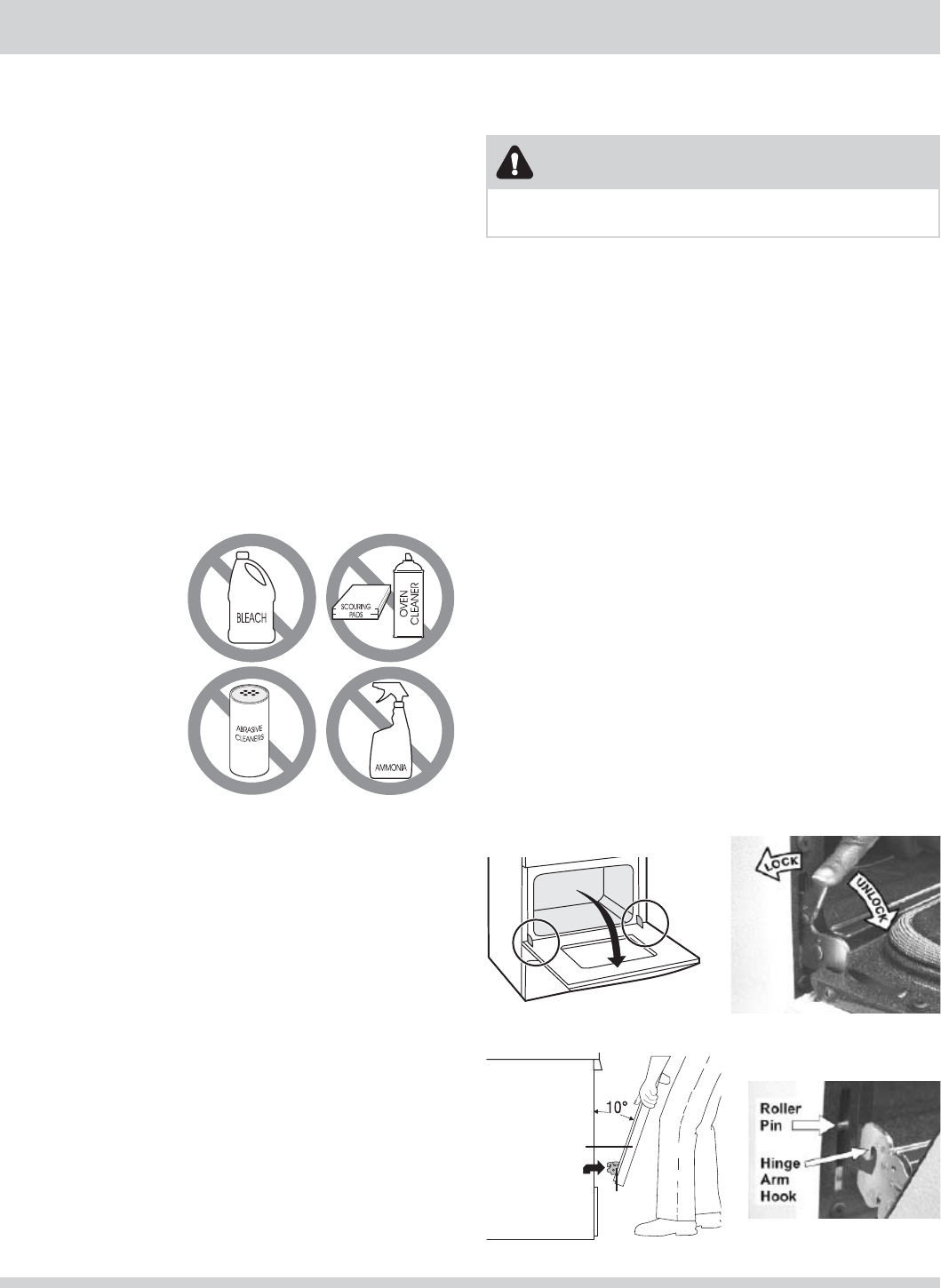
30
Figure 3
Figure 4
Oven door
Around
Hinge
CARE & CLEANING
CAUTION
The door is heavy. For safe, temporary storage, lay the
door fl at with the inside of the door facing down.
Removing and replacing the main oven
door (If equipped with hinge style A)
To Remove Oven Door:
1. Open oven door completely (horizontal with fl oor -
See Figure 1).
2. Pull the door hinge locks on both left and right
door hinges down from the oven frame completely
towards the oven door (See Figure 2). A tool such as
a small fl at-blade screwdriver may be required.
3. Firmly grasp both sides of oven door along the door
sides (Do not use the oven door handle - See Figure 3).
4. Close the door to the broil stop position (the oven door
will stop into this position just before fully closing).
5. With the oven door in the broil stop position, lift the
oven door hinge arms over the roller pins located on
each side of the oven frame (See Figure 4).
To Replace Oven Door:
1. Firmly grasp both sides of oven door along the door
sides (Do not use the oven door handle - See Figure 3).
2. Holding the oven door at the same angle as the
removal position, seat the hook of the hinge arm over
the roller pins located on each side of the oven door
frame (See Figure 4). The hook of the hinge arms
must be fully seated onto the roller pins.
3. Fully open the oven door (horizontal with fl oor- See
Figure 1).
4. Push the door hinge locks up towards and into the
oven frame on both left and right oven door hinges
(See Figure 2) to the locked position.
5. Close the oven door.
Door Hinge locations
with oven door fully open
Figure 1
Figure 2
cooktop which
can burn and
cause Special
Caution for
Aluminum Foil
and Aluminum
Cooking Utensils
Cleaning recommendations for the
ceramic glass cooktop (continued)
Plastic or foods with a high sugar content:
These types of soils need be removed immediately if spilled
or melted onto the ceramic cooktop surface. Permanent
damage (such as pitting of the cooktop surface) may occur
if not removed immediately. After turning the surface
elements OFF, use a razor blade scraper or a metal spatula
with a mitt and scrape the soil from the hot surface (as
illustrated). Allow the cooktop to cool, and use the same
method for heavy or burned on soils.
Do not use the following on the ceramic glass
cooktop:
• Do not use abrasive cleaners and scouring pads,
such as metal and some nylon pads. They may
scratch the cooktop, making it more diffi cult to
clean.
• Do not use harsh cleaners, such as chlorine
bleach, ammonia or oven cleaners, as they may
etch or discolor the cooktop.
• Do not use dirty
sponges, cloths
or paper towels,
as they can leave
soil or lint on the
• Aluminum foil
Use of aluminum foil will damage the cooktop. Do not
use under any circumstances.
• Aluminum utensils
Since the melting point of aluminum is much lower
than that of other metals, care must be taken when
aluminum pots or pans are used. Pans that boil dry
may permanently damage cooktop by breaking, fusing
to, or marking it.
Care and cleaning of stainless steel
Some models are equipped with stainless steel exterior
parts. Special care and cleaning are required for
maintaining the appearance of stainless parts. Refer
to the General Care & Cleaning table for detailed
cleaning instructions.




